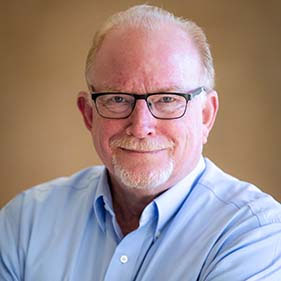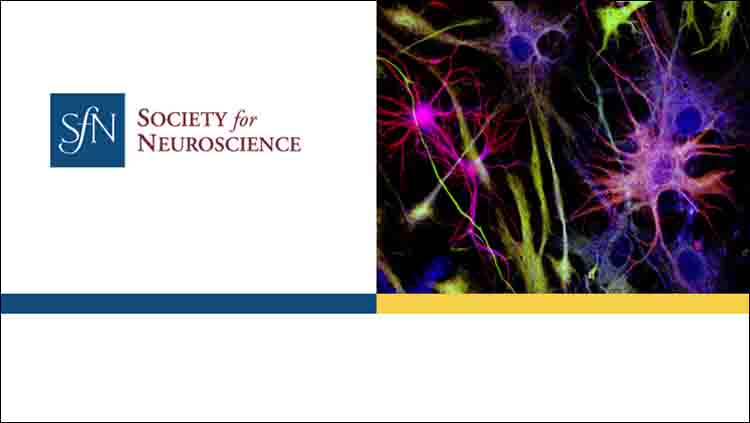Message From the President: A Society for All

John Morrison
My introduction to SfN was the 1976 annual meeting in Toronto, Canada. As a PhD student at Johns Hopkins University, I was overwhelmed by the sheer mass of neuroscience with the 4,303 attendees concentrated in one place. My first chance to present at SfN came in 1978 in St. Louis, and my attendance proved pivotal in my career. During the meeting, I spotted Floyd Bloom, then a faculty member at the Salk Institute (and SfN past president), about to step onto a long escalator in the convention center. I hurried over to take the slow ride up with him. Over the course of that escalator-spanning conversation, Bloom offered me a postdoc in his lab; I was promoted to faculty at Salk several years later. My transitions from grad student to postdoc to faculty, always difficult career steps, clearly would have been much harder if not for SfN’s gathering of the neuroscience community in a single location. I’ve rarely missed an SfN meeting since.
As my career progressed, the Society’s role in developing the field and individual member’s careers remained clear. My service with SfN grew over time: committee member; chair of three committees; the second editor-in-chief of BrainFacts; SfN Council member; secretary; and now president.
Much of my volunteer activity through SfN and my academic institutions has been focused on communicating neuroscience to the public and policymakers. The earliest motivation for this focus comes directly from my mother. Leonie Morrison was a brilliant woman, a psychiatric nurse, and an avid consumer of medical biology news. Once I had begun my neuroscience career, she would come to me with articles about brain or biomedical research. “John, they say in this article…” was a common introduction to the latest story she read. As we discussed the science behind the articles and whether or not the article covered it correctly, I would occasionally remind her “Mom, I am ‘they’!”
A second motivation for my public-facing communication efforts came from one of my first community engagement events. Hundreds of people showed up for a talk about my research on Alzheimer's disease. After I finished speaking, there was a stampede to see up close the human brain I had brought with me. This particular event, alongside my mom’s consistent questions, drove home the huge hunger the lay public has for information about the brain.
There is no organization better positioned to engage the public about the brain than SfN. But a few years ago, SfN didn’t have a public-facing website that shared what we know about the brain in an engaging, story-driven way. To connect the public with SfN’s community of experts, I have proudly been involved with the BrainFacts website, launched by SfN in 2012. The site was built off the Brain Facts book SfN had been publishing for years to support high school science teachers, as well as other SfN print materials designed to inform policymakers and the public. After the initial site was launched, BrainFacts content was enhanced with an extremely popular interactive 3D-model of the brain. Custom designed for the website, the interactive model lets anyone explore the structures hidden between their ears.
There is no organization better positioned to engage the public about the brain than SfN.
With the success of the 3D brain on BrainFacts, my interest shifted to how we could tell an interactive story featuring a single neuron. As part of SfN’s 50th anniversary celebrations there was a desire to build some type of public exhibit that celebrated the brain; something I thought might be a perfect opportunity for the story of a single neuron. However, we needed help bringing this vision to life. After some initial exploration, we discovered ARTECHOUSE, an organization that builds digital and experiential art exhibitions. A three-year collaboration followed, over which we collected new data to accurately visualize the development of a human neuron — from before birth to death. The Life of a Neuron exhibit was previewed at Neuroscience 2019 with the full experience available to the public during the fall of 2021 in Washington, D.C., and later in 2022 in New York City. Both SfN and ARTECHOUSE hope to see the experience showcased in other locations and venues in the coming years.
...near unanimous support was seen from the SfN membership in regard to accepting the proposed revisions to the Society’s governing documents
When it comes to the nature of who SfN serves in its membership, we must keep pace with the needs of the field. Along those lines, near unanimous support was seen from the SfN membership in regard to accepting the proposed revisions to the Society’s governing documents. SfN Council had identified the need to update the Society’s membership structure and doing so required a vote by the full membership. The primary changes center around expanding the people and categories that should be included as SfN members, with other changes consolidating current best operating practices of a professional society. I encourage everyone to read the full article on the member-approved changes to SfN’s governing documents.
SfN is a Society that serves those actively involved in neuroscience research and teaching as well as a larger community seeking a better understanding of the nervous system. I look forward to an exciting year engaging with the brain-curious public and seeing all of you at Neuroscience 2025.






















